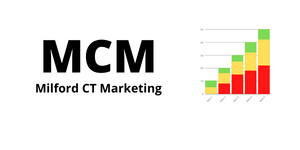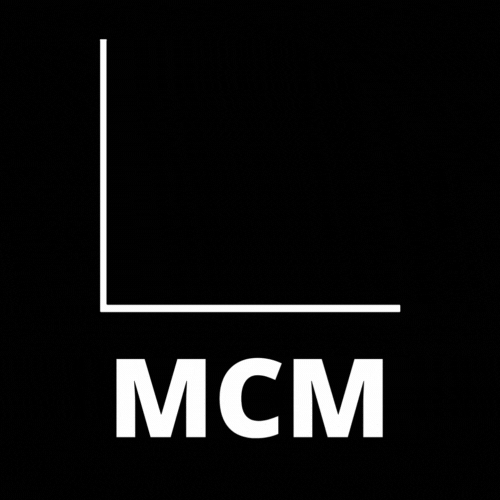How to Rank in Google Maps
If you want to know how to rank in Google Maps, quickly, this in-depth tutorial covers EVERY base of local SEO.[1]
Already know about one of the categories covered? Skip to a section:
► Google My Business Setup: 3:21
► Google My Business Optimization: 8:50
► Onpage Optimization: 17:45
► Citations: 25:58
► Backlinks: 32:05
👉 Access more local information at Milford CT Marketing
When it comes to ranking your local business, you want to focus on being found in the top 3 map results, as well as in the organic listings below. When you’ve found in both places, this is what I refer to as “local domination.” It’s a good place to be.
In this video, I don’t hold anything back. I cover every important piece you’ll need to nail down in order to achieve this level of local domination. I cover it in 5 overall topics that Google uses to determine where you’ll show up in those results.
► Moz Citation Audit Tool: https://moz.com/local/search
► Whitespark Citations by Category: https://whitespark.ca/best-citations-by-category/us/
► Whitespark Citations by City: https://whitespark.ca/best-citations-by-city/us/
🎬 Register for the FREE On-demand video masterclass training, “The Wildly Profitable One-Weekend Website Blueprint for Service Businesses!” Just go to: https://wesmcdowell.com/training
🤑 Need website hosting? Grab my exclusive affiliate discount and save 65% off the normal hosting price: https://wesmcdowell.com/hosting
Ranking In Google Maps
Learning how to rank in Google Maps is an SEO technique used by Google. It is a great way to advertise and boost your business as well as gain more customers. As part of the Google Places pack, ranking in Google Maps is vital for businesses that want their companies to be seen by as many people as possible.
The idea behind ranking in google maps is that there are actually three different ways you can rank:
– Google Map Pack (the map listings on the right side)
– The Google 3 Pack (Google’s carousel atop organic results)
– The Local Finder (compare local search results and maps)
All these methods let potential customers find businesses easily from their location. This helps drive traffic to your site, which helps increase sales or leads.
One way you can rank in Google Maps is through Google’s Map Pack, which are the listings on the right side of your results page when people are searching for businesses by location. This requires a Google My Business listing, which has to be verified so that Google knows it is actually associated with your company or business.
You also have to optimize your website properly to drive traffic and increase sales opportunities. Make sure all of your internal links connect to pages that are important for ranking in maps, such as about us or contact pages for example, not just any random page on your site.
Another way to get ranked in Google Maps is through Google’s 3 Pack carousel found atop many search results pages. These types of searches come from Google Places, Google Search, and Google Maps.
This option is the easiest to get ranked in because it takes little work on your part. It’s just a matter of optimizing your website for organic search traffic from Google. Plus, being at the top of this list means that people are more likely to click on your link compared to other results below you.
The Local Finder is another great way to rank in Google Maps listings. This allows people who have found a business they want through a comparison tool to go directly from there and call or visit the company they’ve chosen using their mobile device or computer.
Again, having a proper listing with a complete and detailed description as well as photos will help improve your chances of ranking so customers can find you easily.
The three methods on how to rank in Google Maps can help you boost your business and increase sales. Make sure that you choose the best method for your business and develop a strategy to optimize your website and get yourself ranked as soon as possible.

Ranking in Google Maps is essential for businesses seeking to enhance their local visibility and attract customers within their geographical area. With a strategic approach and optimization techniques, businesses can increase their chances of appearing prominently in Google Maps search results. In this article, we will explore effective strategies on how to rank in Google Maps and improve your local online presence.
- Optimize Your Google My Business Profile:
A well-optimized Google My Business (GMB) profile is the foundation of your Google Maps ranking. Ensure that your GMB listing is complete and accurate, including your business name, address, phone number (NAP), website URL, business hours, and categories. Add relevant keywords, such as “how to rank in Google Maps,” in your business description and utilize all available features, such as posting updates, adding photos, and receiving and responding to reviews. The more comprehensive and up-to-date your GMB profile is, the higher your chances of ranking in Google Maps.
- Focus on Localized Keywords:
To rank in Google Maps, incorporate localized keywords throughout your website and GMB profile. Include the phrase “how to rank in Google Maps” in your website’s meta tags, page titles, headings, and content. Additionally, integrate location-specific keywords relevant to your business and target area. For example, if you’re a bakery in New York City, include keywords like “best bakery in NYC” or “top-rated bakery in New York.” This optimization strategy helps Google associate your business with specific locations, increasing your visibility in local map searches.
- Build Consistent Local Citations:
Local citations are online mentions of your business name, address, and phone number across various directories, review sites, and social media platforms. Consistency is crucial here. Ensure that your NAP details are consistent across all platforms, including your website, GMB profile, and third-party directories. When creating citations, target websites that are relevant to your industry and location. Examples include Yelp, Yellow Pages, TripAdvisor, and industry-specific directories. These citations help establish your business’s credibility and authority, positively impacting your Google Maps ranking.
- Encourage Positive Customer Reviews:
Customer reviews play a vital role in Google Maps rankings. Encourage your satisfied customers to leave reviews on your GMB profile. Respond promptly and professionally to all reviews, whether positive or negative, to demonstrate your commitment to customer satisfaction. The number and quality of reviews, including the mention of “how to rank in Google Maps,” influence your business’s visibility. Positive reviews and high ratings not only improve your Google Maps ranking but also enhance your reputation and encourage potential customers to choose your business over competitors.
- Enhance Your Website’s Local SEO:
To rank in Google Maps, your website’s local SEO must be strong. Ensure your website includes location-specific landing pages optimized for relevant keywords. These pages should provide valuable information about your products or services in the context of the targeted location. Incorporate the phrase “how to rank in Google Maps” naturally within the content, while ensuring it flows organically. Include your business’s address, contact information, and embedded Google Maps on these pages to reinforce your local relevance.
- Earn High-Quality Backlinks:
Backlinks from reputable websites are an important factor in Google’s ranking algorithm. Focus on earning high-quality backlinks from local businesses, industry associations, and influential websites in your area. Seek opportunities for collaborations, guest blogging, or local sponsorships to acquire these backlinks. The anchor text used in these links can include targeted keywords like “how to rank in Google Maps,” further strengthening your local SEO efforts.
Conclusion:
Achieving a higher ranking in Google Maps requires a strategic approach and consistent optimization efforts. By optimizing your Google My Business profile, focusing
on localized keywords, building local citations, encouraging positive customer reviews, enhancing your website’s local SEO, and earning high-quality backlinks, you can significantly improve your chances of ranking in Google Maps and increasing your local visibility.
Remember that ranking in Google Maps is an ongoing process. Regularly monitor your GMB profile, update your business information as needed, and consistently engage with customer reviews. Stay proactive in seeking new opportunities for local citations and backlinks, as well as refining your website’s local SEO strategy. By continuously optimizing and adapting, you can stay ahead of the competition and maintain a strong presence in Google Maps.
Ranking in Google Maps offers numerous benefits for businesses. It increases your visibility to potential customers who are actively searching for products or services in your area. The higher your ranking, the more likely you are to receive valuable organic traffic and drive more footfall to your physical location. This can result in increased brand awareness, customer engagement, and ultimately, improved conversions and business growth.
In conclusion, if you want to know how to rank in Google Maps and boost your local visibility, follow these strategies: optimize your Google My Business profile, focus on localized keywords, build consistent local citations, encourage positive customer reviews, enhance your website’s local SEO, and earn high-quality backlinks. By implementing these tactics and consistently refining your approach, you can improve your Google Maps ranking and attract more customers to your business. Remember, the key is to provide accurate and valuable information, engage with your audience, and deliver exceptional products or services to establish a strong local presence that resonates with both search engines and potential customers.
For More information visit Milford CT Marketing to learn how to rank in Google maps



